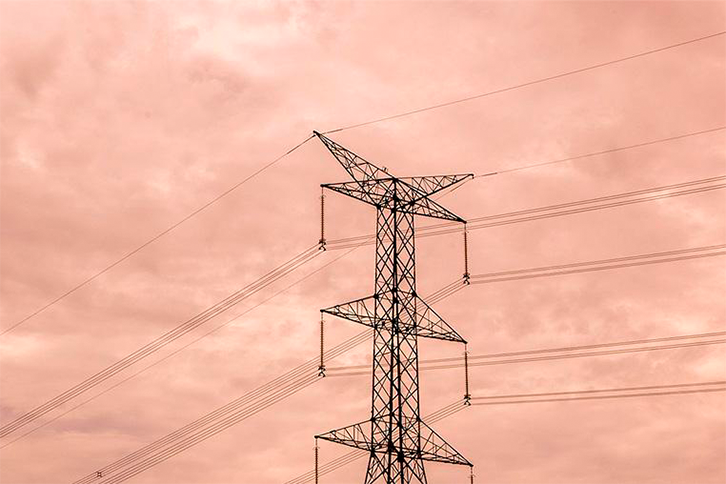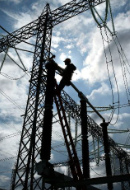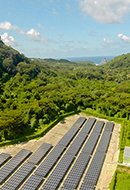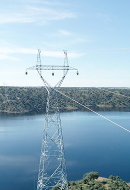The road to smart grids
Realizing the benefits of the green grid
Electrical network Climate action Operating plants
A global transition to a green grid powered by renewables is underway, helping utilities and governments meet ambitious goals for reducing climate-changing emissions and bringing additional benefits to energy consumers.
![]() Publication: June 2023
Publication: June 2023 ![]() Reading time: 9 minutes
Reading time: 9 minutes

Creating an entirely green grid won’t be easy. It will require expanding the country’s current electricity transmission (long-distance) and distribution (“last mile”) infrastructure by about 60 percent to support the shift as well as the growing demand for power.
Fortunately, companies like Avangrid, External link, opens in new window. a member of the Iberdrola Group, are investing heavily in green energy. Such efforts are fueling optimism that the U.S. can meet its 2035 target for 100 percent green electricity generation — that is, putting green electrons on the grid and building out the infrastructure for the transmission and distribution of those electrons to an electrified economy.
External link, opens in new window. a member of the Iberdrola Group, are investing heavily in green energy. Such efforts are fueling optimism that the U.S. can meet its 2035 target for 100 percent green electricity generation — that is, putting green electrons on the grid and building out the infrastructure for the transmission and distribution of those electrons to an electrified economy.
New grid, new infrastructure
Building new sources of green energy is only the first step toward a green grid, says Sebastian Libonatti, vice president of business development at AVANGRID. “There’s a lot of work to be done in both the high voltage (transmission) and the lower voltage (distribution) side of the network,” he says. That means we need to construct cross-country transmission and local distribution lines so we can move renewable power from where it is produced to where it is consumed, by consumers and businesses transitioning to electric vehicles and heating.
High-voltage DC transmission, in particular, will require significant infrastructure investments, explains Alan Trotta, senior director of transmission regulatory at AVANGRID. “The land or offshore areas where you can site renewable energy resources are generally far from where customers are,” he says. “There’s really no room in major cities to site the acres of solar panels and wind turbines necessary to power them.”
That’s why the U.S. Department of Energy’s Building a Better Grid Initiative, launched at the beginning of 2022, focuses on long-distance, high-voltage transmission networks as an enabler of green grids. “That’s the first primary need for transmission expansion to achieve carbon goals,” Trotta says.
In addition, while we can build the infrastructure necessary to move green power where it is needed, we still must ensure it is available when it is needed. This is where energy storage will play a key role.

Progress on the smart grid
Telecommunications trends and applications in the smart grid.

Electrical substations
Find out what electrical substations are and how they work.

Smart micro-grids
The potential for sustainable energy

High, medium and low voltage
Discover their different peculiarities and uses.
The intermittent nature of solar and wind energy means the green grid will have to store energy for when the sun doesn’t shine and the wind isn’t blowing. Storage can also reduce the amount of transmission and distribution infrastructure needed for the green grid. That’s because storage lets utilities smooth out energy peaks. So, instead of building increased capacity for times of maximum solar or wind generation, utilities can store excess energy and release it over time.
Batteries can handle daily swings in energy production by storing excess energy for when it’s needed and isn’t being produced, for example, at night when solar panels go dark. But they can’t store enough energy for long enough to get the grid through the shorter days and cloudier skies of winter, particularly in northern climes. “For a region like New England, for example, long-duration battery technology still needs to be developed at the scale to manage the huge needs in the wintertime,” Trotta says.
Here again, Avangrid is working on solutions, notably in the area of green hydrogen. Utilities can use excess output from wind or solar farms to produce hydrogen from water via a chemical process called electrolysis. Stored hydrogen can then power a fuel cell to send electricity back to the grid. It can also be blended with natural gas to improve the emissions profile of gas-powered peaker plants and balance electricity supply for low sun and wind days, according to Trotta “It’s a potential part of the future mix for clean generation to help manage intermittency and winter needs,” Trotta says of green hydrogen.

Getting into alignment
Among the challenges Libonatti sees to reaching an emission-free grid in time to meet U.S. state and federal targets are the approvals required for critical infrastructure and heavy industry that will remain in place for decades, particularly transmission lines that cross jurisdictions and property lines.
“I think our industry needs to do a better job of getting the right stakeholders involved right from the beginning,” Libonatti says. “Communities don’t like to be surprised, and I completely understand. So I think they need to be part of the process right from the get-go, and we need to do a better job explaining why we’re doing what we’re doing.” As part of that process, he suggests highlighting the local jobs that infrastructure projects bring as well as the economic benefits of workers spending money in the communities around the projects
On the policy side, Avangrid CEO Pedro Azagra (CEO of the Iberdrola Group since 2025) says a coherent federal approach to siting interstate transmission projects will help reach the 2023 and 2024 targets for 100 % green electricity, including emissions-free buildings and transit. As the process currently exists, developers need to obtain federal, state and multiple local permits for every state a project travels through. This makes developing, permitting and constructing a single project a decades-long process.
The future of the grid
Besides cutting emissions from electricity generation, the second-largest source of CO2 emissions, green grids will return many other benefits.
The upgrades required for the green grid will also accelerate the move to electric vehicles, helping to cut emissions from transportation, which the U.S. Environmental Protection Agency lists as the largest emitter of greenhouse gases. “All the charging is going to be a huge draw, requiring a lot more electric generation,” says Libonatti. “If you can’t connect all that remote generation to the customers using it to charge their vehicles, it’s going to exacerbate any existing problems.”
He expects to see such transformations in cities like New York, where ambitious environmental goals will require significant efforts to have greener power. “The benefits in those scenarios are pretty direct and visible,” Libonatti says. Here’s to a cleaner future thanks to green grids.
Source: Washington Post.




